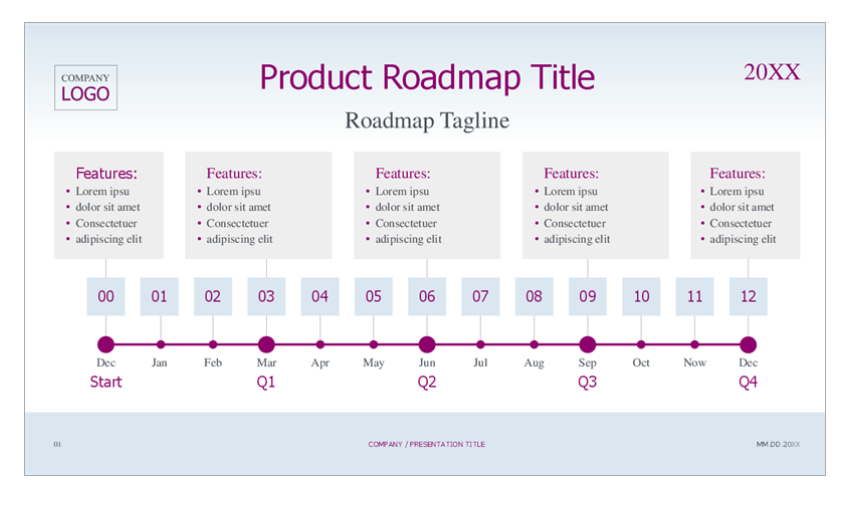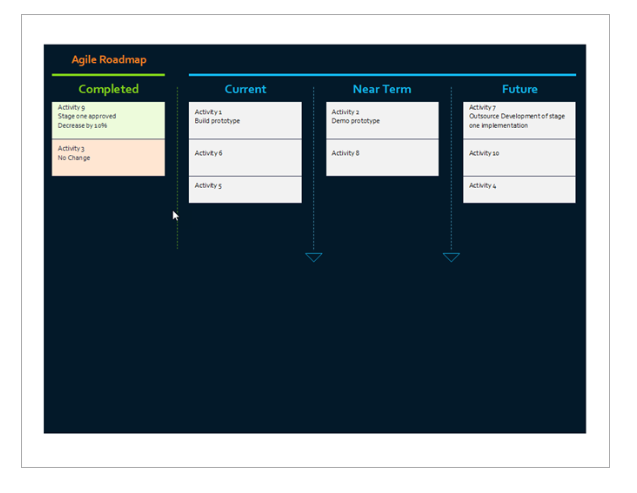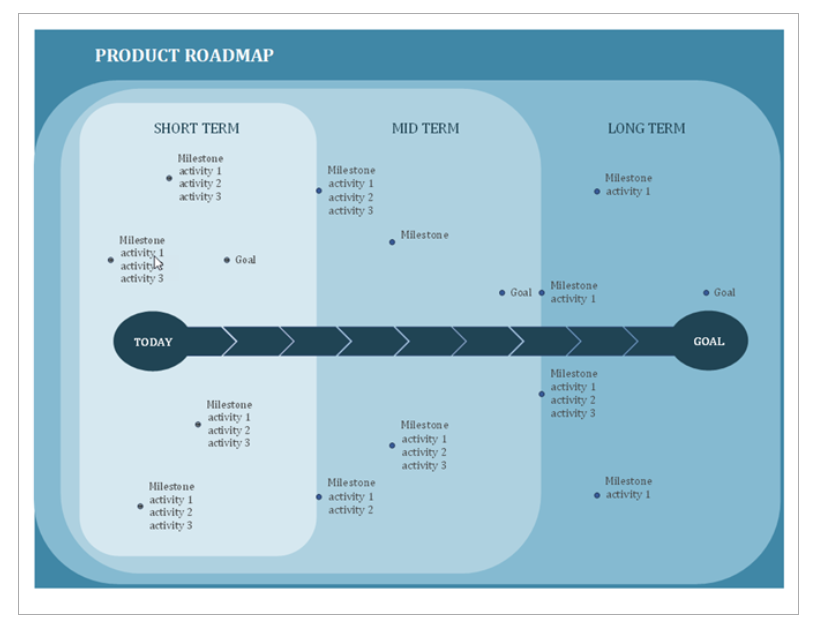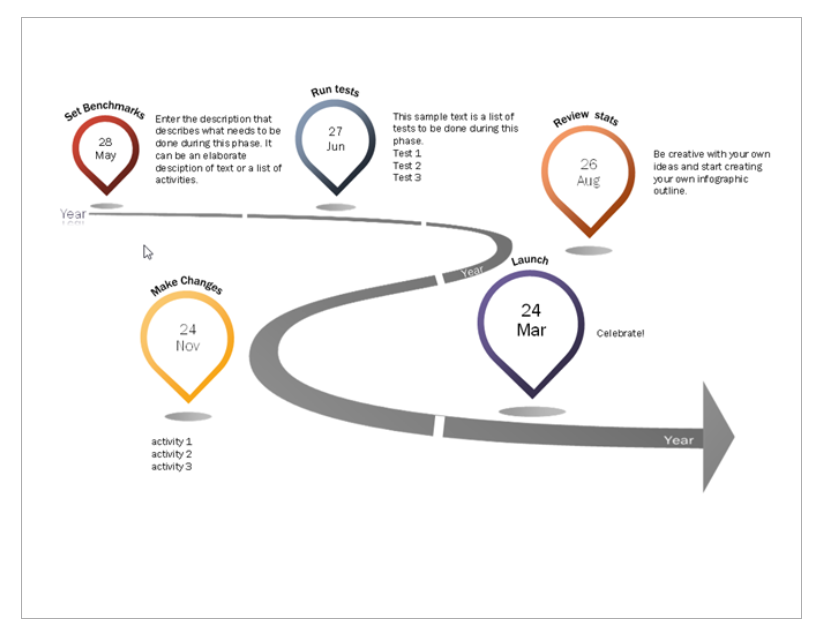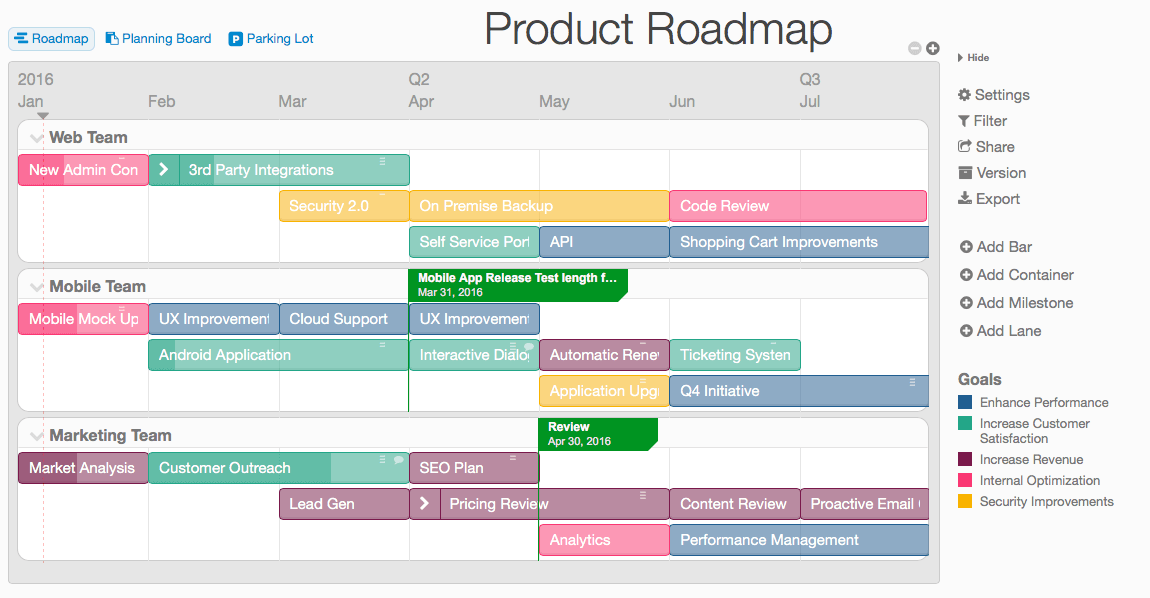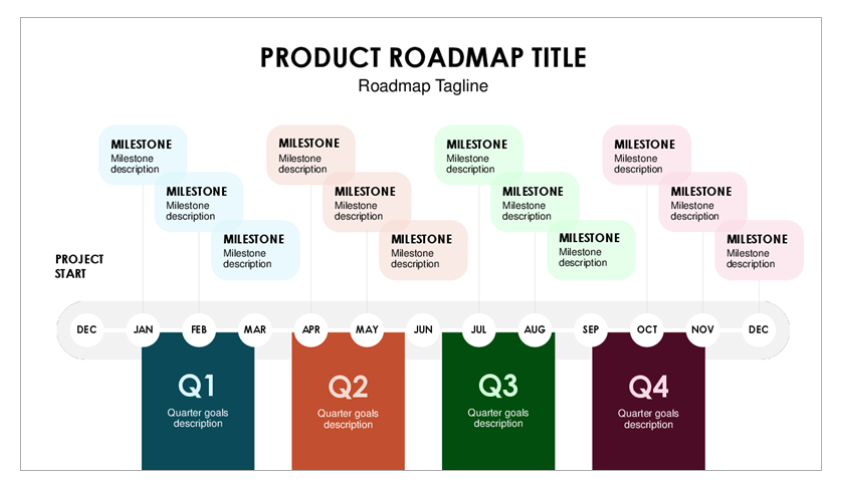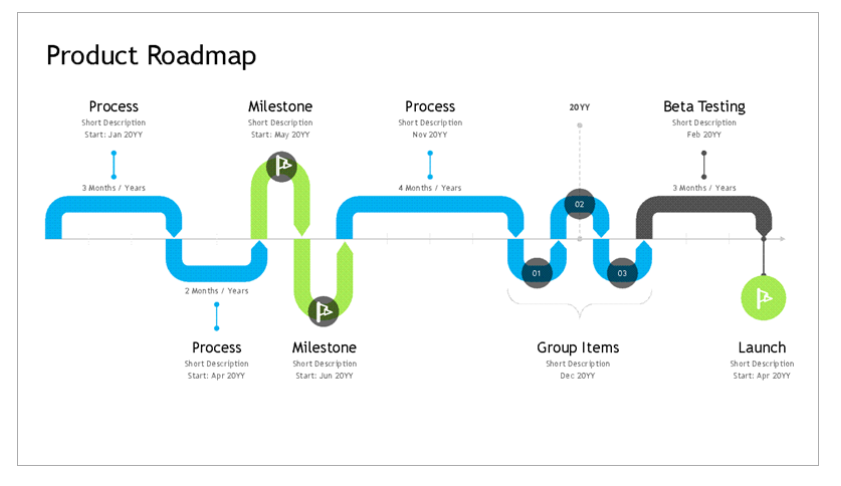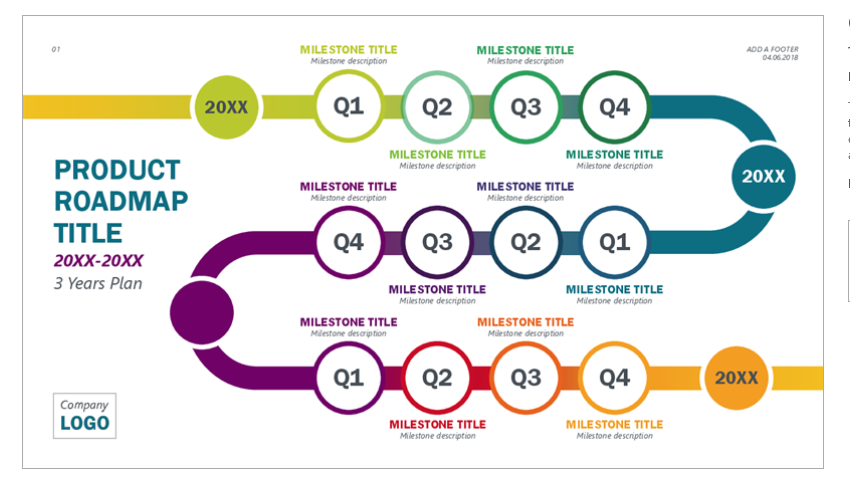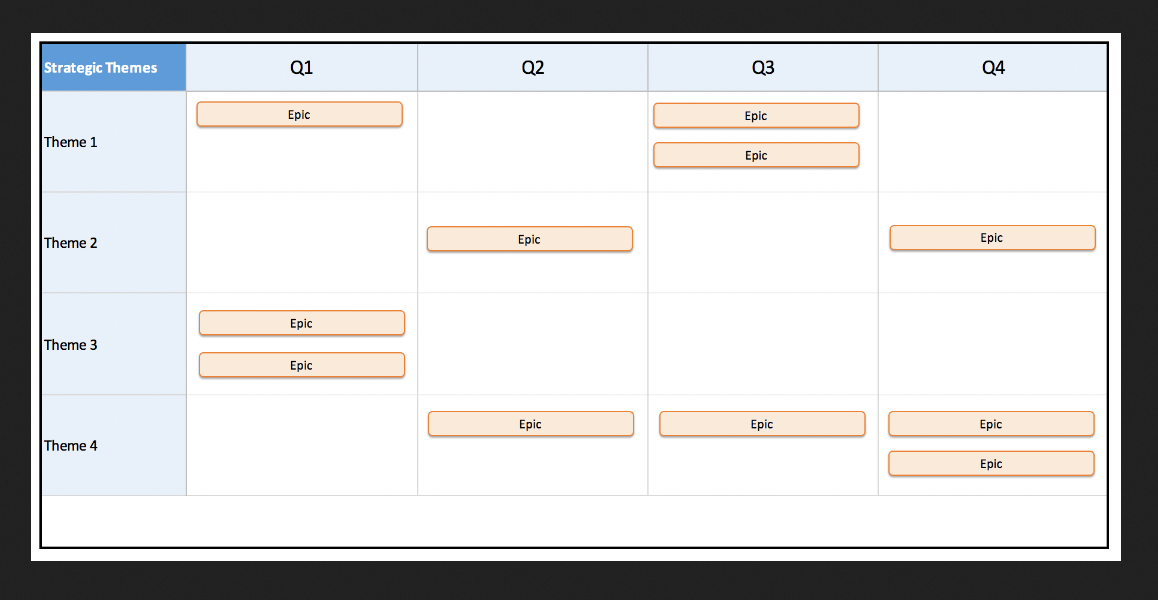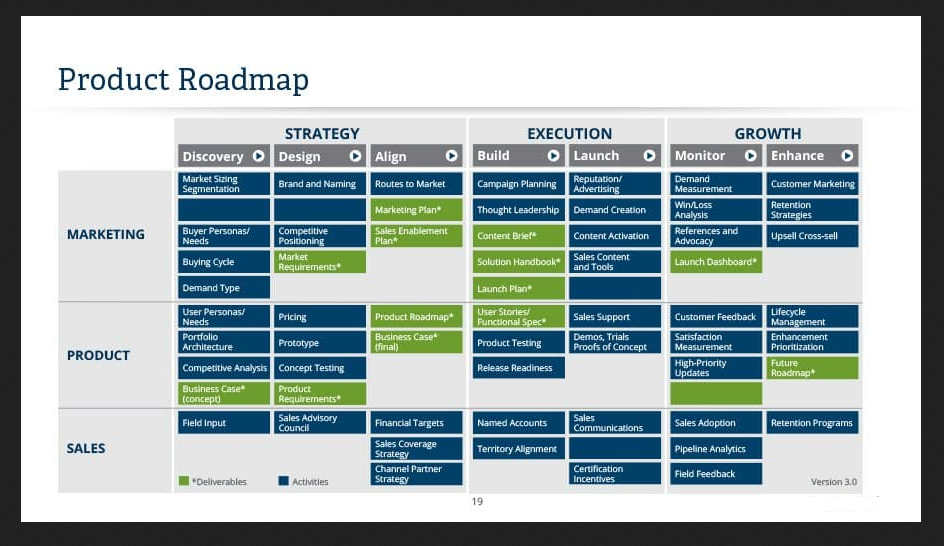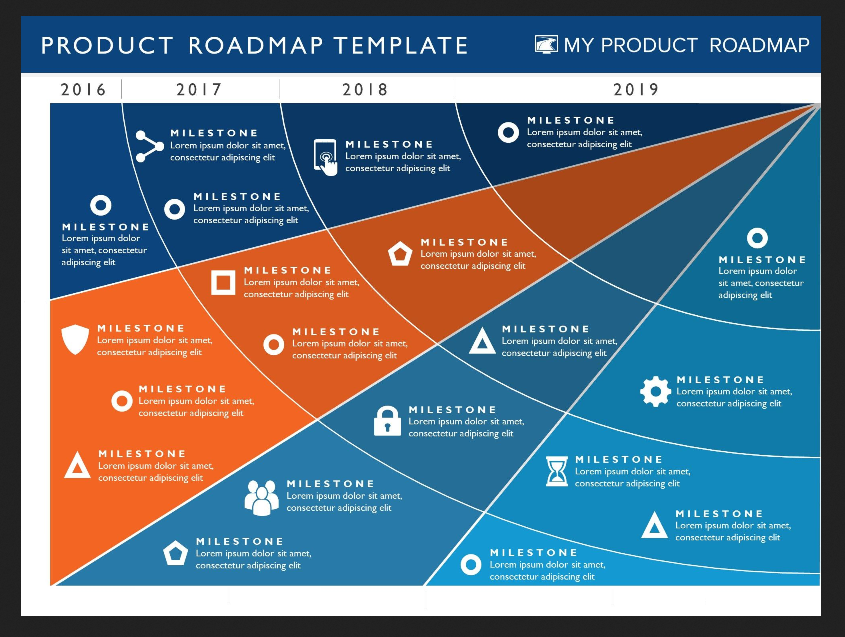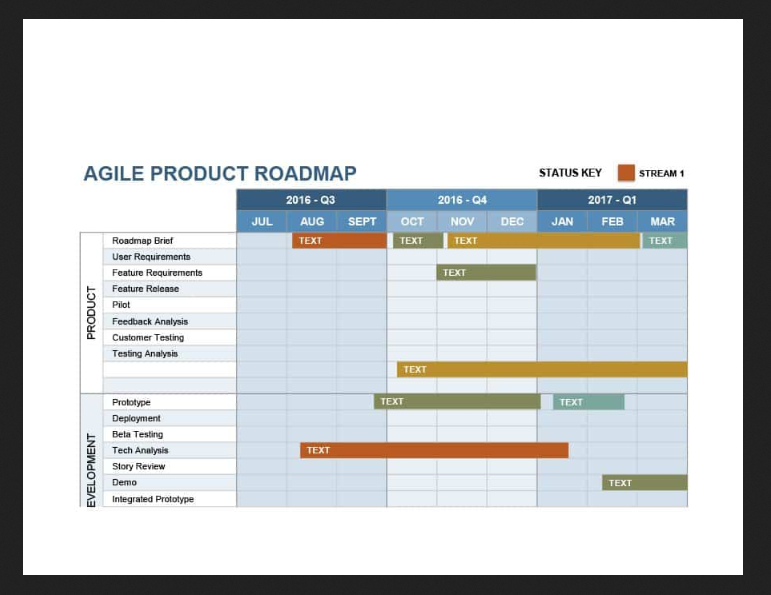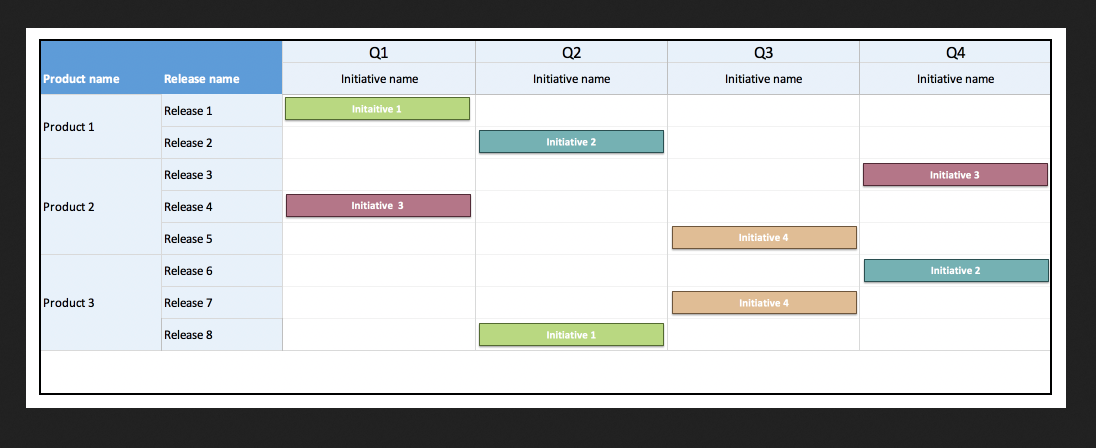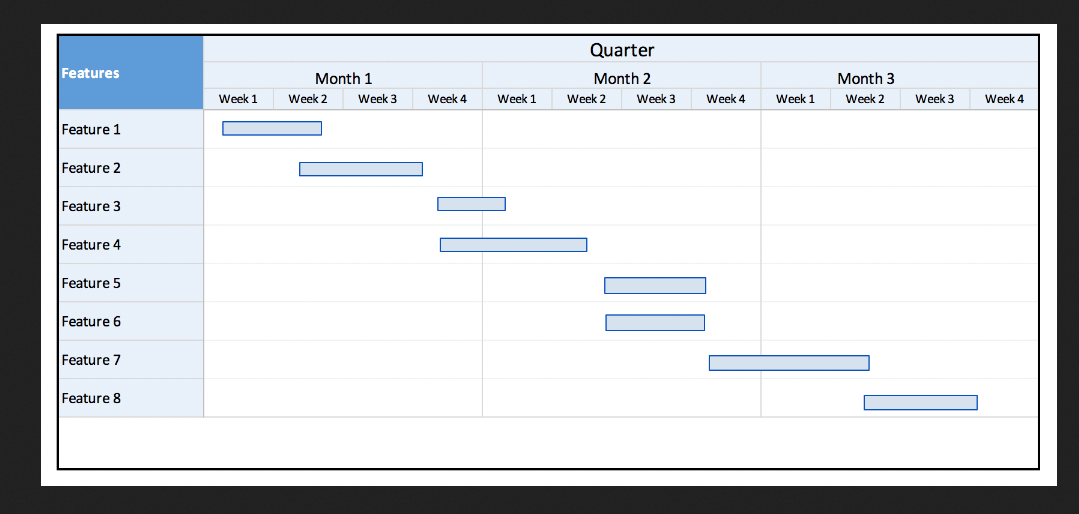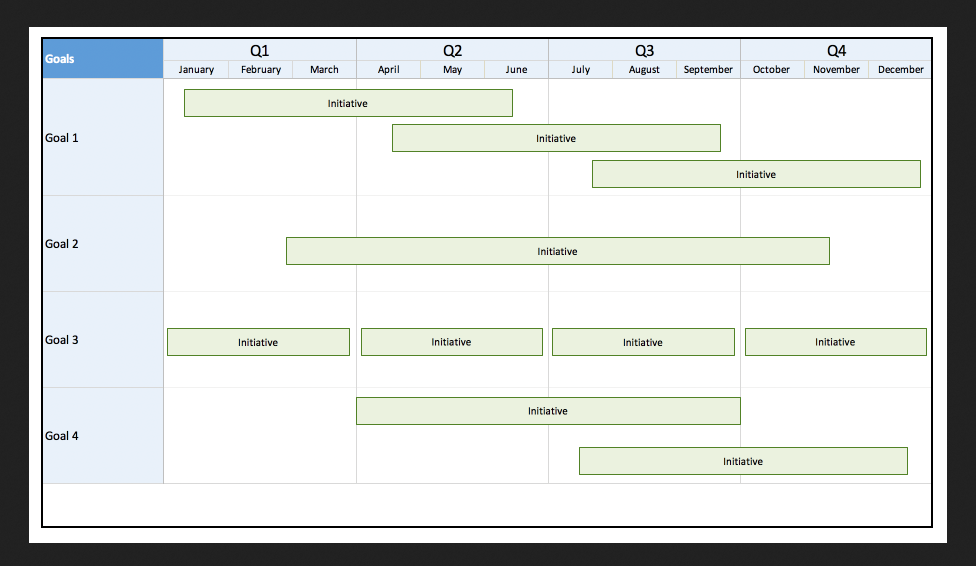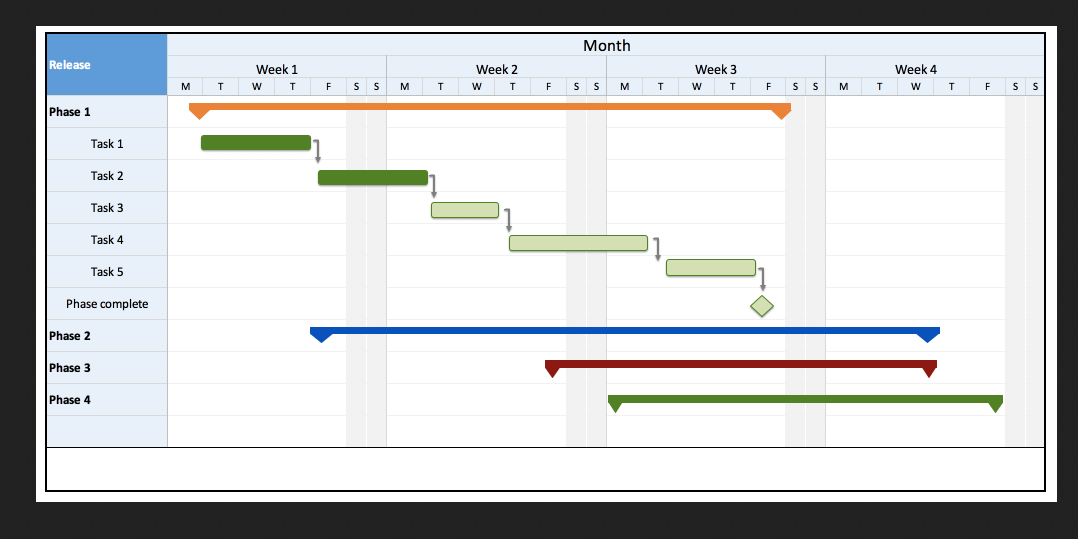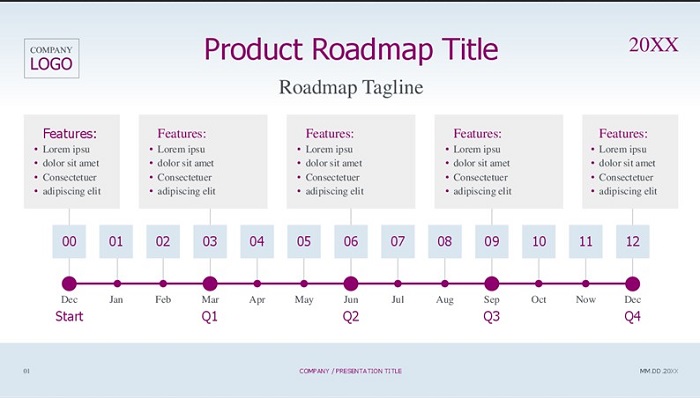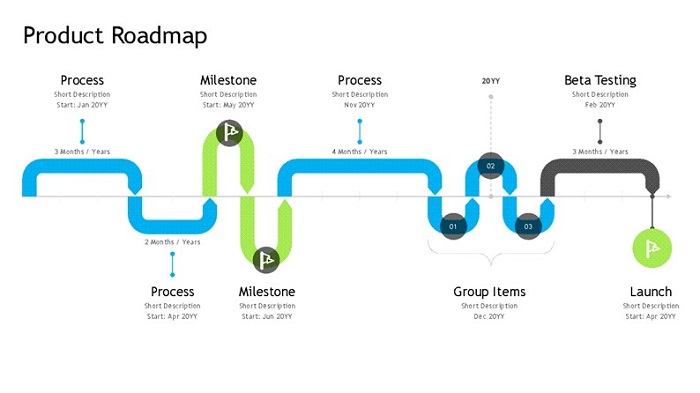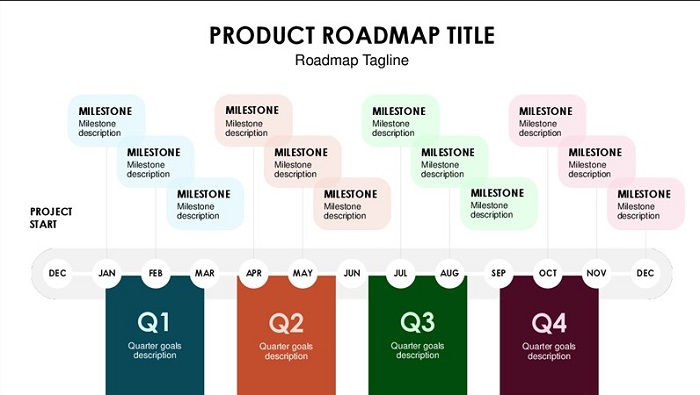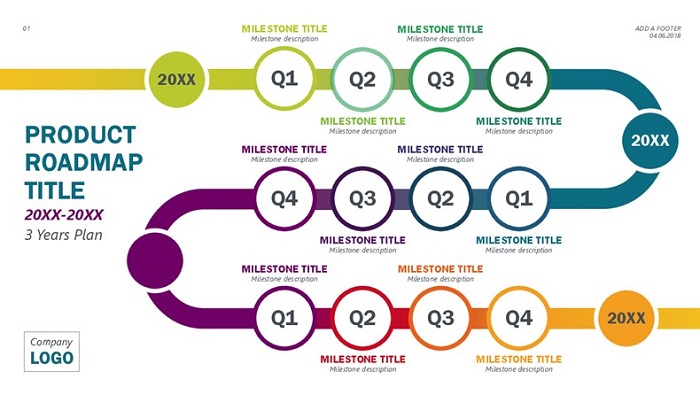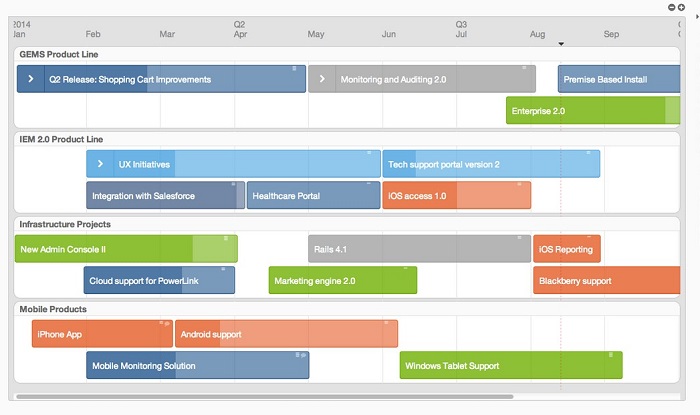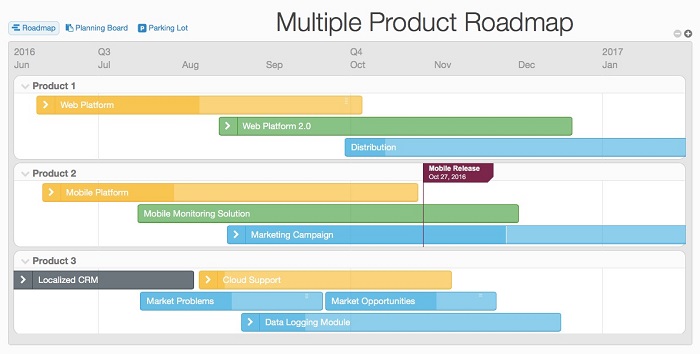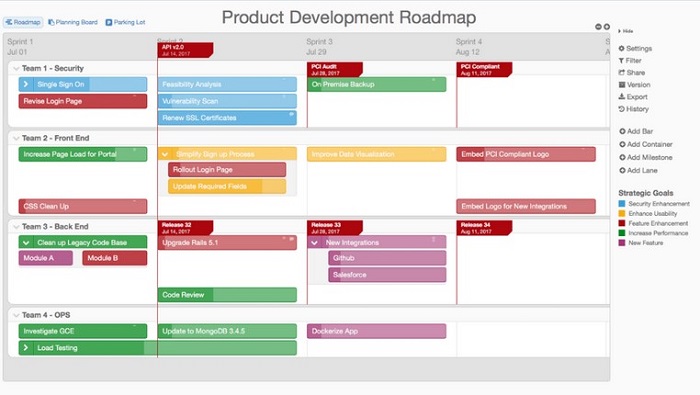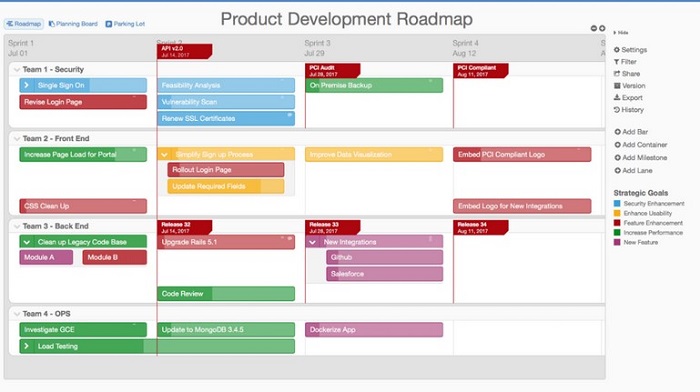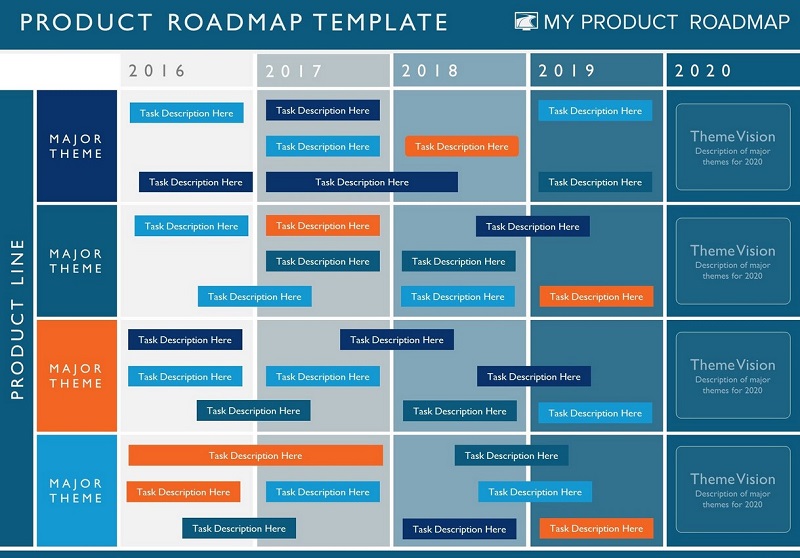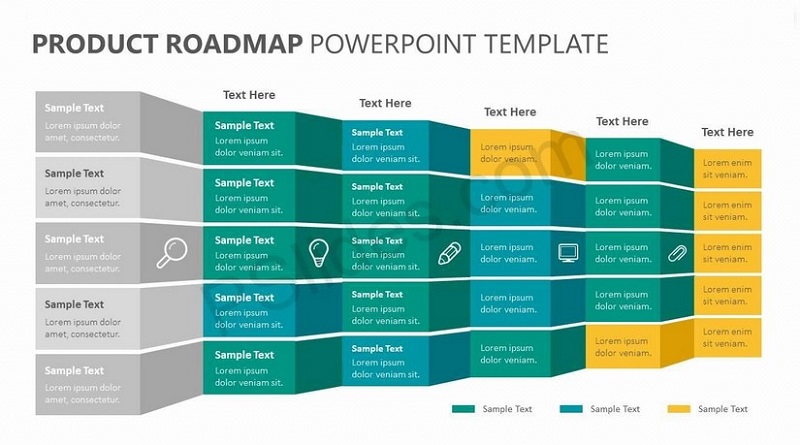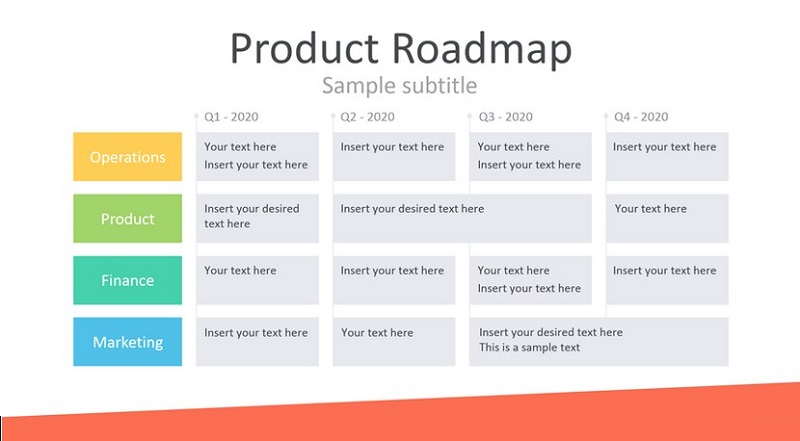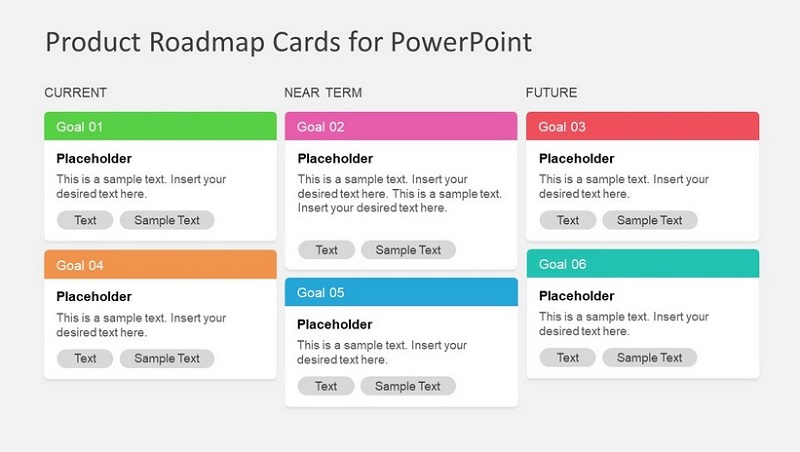Establishing and presenting a product roadmap is a very essential thing in term of the managerial job desks. The roadmap is basically a way to communicate with other parties in a company regarding where, when, and how the products are marketed.
This way, the roadmap presentation is very important so that the messages can just be delivered well. That’s why; when you are about presenting your product, it is necessary to use a kind of product roadmap that is designed not only to communicate but also to persuade.
Product Roadmap
There are indeed so many templates and tools out there functioned as the product roadmap. However, the most important thing is choosing one of them that are indeed suitable for your products. One thing that you should understand is that there is no term of the universal roadmap. One roadmap tends to be better for certain products but not for the others. Meanwhile, your skills to add and lessen something within the roadmap are needed for a better presentation.
So, what are the template packages considered the best for your presentation? Check out the list below.
What Should Include in My Product Roadmap
While the specific contents can vary depending on your product and your audience, here are some key elements that most product roadmaps should include:
- Product Vision: Your product vision is a high-level description of what you hope to achieve with your product in the long term. It sets the direction for your product and serves as a guiding light for your roadmap.
- Goals or Objectives: These are the specific, measurable outcomes you hope to achieve in the short to medium term. They should align with your product vision and provide a clear path toward achieving it.
- Features or Initiatives: These are the specific tasks or projects you plan to undertake to achieve your goals. They could be new features, improvements to existing features, or other initiatives like research or marketing campaigns.
- Prioritization: Not all features or initiatives can be developed at once, so prioritizing is important. It could be based on factors like customer value, business value, development effort, or strategic alignment.
- Timeline: Your roadmap should include a timeline that shows when each feature or initiative will be developed. It could be based on specific dates or broader timeframes like quarters or phases.
- Progress Indicators: These markers show how much progress has been made toward each feature or initiative. They can help stakeholders understand where you are in the development process.
- Stakeholder Input: Your roadmap should reflect the needs and priorities of all relevant stakeholders. It could include customer feedback, team members’ input, or executives’ strategic direction.
It is a strategic document that communicates your product’s direction and progress. It should be clear, concise, and focused on the most important information.
Product Roadmap Templates
Product roadmap timeline
Product Roadmap Examples
Product Roadmap PowerPoint
Choosing the Right Product Roadmap Template
Selecting the right template is crucial in effectively sharing your product’s direction and technique. Here are some considerations to keep in mind:
- Understand Your Needs: It may require additional types of roadmaps. For example, a new product launch might require a roadmap focusing on key milestones and launch dates, while an existing product might need a roadmap highlighting planned feature enhancements and updates. Understanding your needs can help you choose a template that best fits your situation.
- No Universal Roadmap: It is important to recognize that there is no “one size fits all” regarding product roadmaps. What works for one product or one company might not work for another. Therefore, choosing a template that can be customized to fit your unique requirements and circumstances is crucial.
- Customization: It allows for high customization. It includes adding, removing, or rearranging sections, changing colors or fonts, and adjusting the level of detail displayed. A customizable template allows you to create a roadmap reflecting your product’s strategy and vision.
- Clarity and Simplicity: It should be easy to comprehend at a glance. Look for templates that present details concisely and visually appealingly. Avoid overly complex or cluttered templates, as they can be hard to understand.
- Alignment with Stakeholders: Different stakeholders may need to see different levels of detail in a product roadmap. For example, executives might prefer a high-level view of the product’s direction, while developers might need more detailed information about specific features or tasks. Choose a template that allows you to create different views or versions of your roadmap for different audiences.
- Tools and Features: It comes with additional tools and features, such as the ability to track progress toward milestones, integrate with project management software, or update in real time. Consider whether these features would be beneficial for your needs.
The goal of a product roadmap is to provide a clear vision of your product’s direction. The right template can help you achieve this goal, but it is also important to be flexible and willing to adapt the template as needed to serve your product and your team best.
Creating a Successful Product Roadmap
Here are some key steps to create a successful product roadmap:
- Define Your Vision and Strategy: The first step in developing a product roadmap is clearly explaining your product’s vision and strategy. It includes comprehending your product’s value offer, target market, and how your product fits into the larger company plan. Your product’s vision and technique should drive all decisions about what features to contain on the roadmap.
- Understand Your Customers and Market: A prosperous product roadmap is built on a deep knowledge of your clients and market. It includes understanding client requirements and pain points, market trends, and the competitive landscape. Use customer feedback, market analysis, and competitive research data to inform your roadmap.
- Prioritize Features and Initiatives: Factors to consider when prioritizing include customer value, company value, development effort, and strategic alignment. Methods like the RICE scoring model (Reach, Impact, Confidence, Effort) or the Moscow method (Must have, Should have, Could have, Will not have) can support prioritizing.
- Create a Timeline: It should include a timeline that shows when each feature or initiative will be developed. This timeline can be based on specific dates (for a time-based roadmap) or broader timeframes like quarters or phases (for a theme-based roadmap). Be realistic about your development capacity and build buffer time for unexpected delays.
- Communicate and Share the Roadmap: Share it with all relevant stakeholders once you create it. It can include internal teams like sales, marketing, and buyer help and external stakeholders like customers or investors. Be prepared to explain your decisions’ reasoning and update the roadmap as conditions change.
- Review and Update Regularly: A product roadmap is not a static document. It should be reviewed and updated regularly to reflect changes in your market, customer needs, business strategy, or development capacity. Regular reviews also provide an opportunity to measure progress against the roadmap and make adjustments as needed.
It is about making a strategic record that communicates your product’s vision, aligns your group, and drives your product’s growth over time.
Using Product Roadmap Templates Effectively
Product roadmap templates can be a powerful planning, communication, and alignment tool. However, to get the most out of these templates, it is important to use them effectively. Here are some tips:
- Choose the Right Template: As mentioned earlier, there is no one-size-fits-all template. The right template for you depends on your product, your audience, and the message you want to convey. Some roadmaps are feature-based, others are goal-based, and others are based on time. Choose the one that best fits your needs.
- Customize the Template: Do not feel constrained by the template. The best roadmaps are often those that have been customized to fit the specific needs of the product and the team. Adding, removing, rearranging sections, changing colors or fonts, or adding custom fields.
- Keep it Simple and Clear: A good roadmap is easy to understand. Avoid including too much detail, making the roadmap clear and easy to read. Instead, focus on the key information that your audience needs to understand your product’s direction and progress.
- Use Consistent Terminology: Be consistent in your use of terminology. It helps avoid confusion and ensures everyone is on the same page. If you use terms that are specific to your company or industry, make sure to explain them.
- Update Regularly: A roadmap is not a static document. It should be updated regularly to reflect the latest plans and progress. It not only keeps the roadmap relevant but also helps to keep everyone informed and aligned.
- Share and Communicate: A roadmap is a communication tool. Share it with all relevant stakeholders, including team members, executives, and customers. Moreover, remember that the roadmap is not just for sharing plans but also for facilitating discussion and gathering feedback.
By following these tips, you can use product roadmap templates effectively to plan your product’s direction, communicate your plans, and align your team and stakeholders.
Best Template Packages for Product Roadmap Presentation
Detailed review and features of top template packages:
The Digital Marketing Pro
The Digital Marketing Pro is a set of templates to feature the Power Point products. What makes the templates are recommended enough is that it has almost all the creative elements to make your presentation more interesting. The templates are designed for the professional business and agencies but there are some additional features for the more casual presentation.
The Digital Marketing Pro is packed with some slide designs that are easy to edit and control. Some options of color schemes, images, and animations are available to support the materials. Interestingly, the templates are compatible for any digital devices even the small ones like Smartphone.
Social Media Trends 2023
Social Media Trends 2023 is indeed established with the social media components as the main inspirations. Those components are regarding the best and suitable to meet the marketing trends as well as the customers’ necessities. Well, there are even over 100 slide designs are available here.
The templates also enable you to make the presentation faster even only a few minutes. All you need to do is just submitting the materials and details and they are just automatically served. Sure, the data are not only presented quickly but also beautifully.
Meanwhile, it is featured the digital research and observation results starting from 2017 with the topic of marketing and social media. The data are guaranteed valid since they are gained directly from the influencers, Snapchat videos, and many more.
Digital Marketing Strategy
Another set of product roadmap templates is available in Digital Marketing Strategy. The PowerPoint templates are not only designed to deliver a sort of powerful presentations but also it is equipped with some cool features. What are they?
First, there are more than 40 unique slides for each theme available. The way to set them up is also very easy by clicking a few buttons. Second, the review feature is provided to see the layout of the presentation before you decide to use it. Third, the templates are completely editable starting from a very small detail. Lastly, many image and animation items for the object and side transitions are available. Those are originally designed by the professional ones.
Meanwhile, the colorful vector illustrations are equipped to support the presentation layout. The result is compatible and able to post in various gadgets and social media.
Marketer Pro
Marketer Pro is a very popular Product Roadmap PowerPoint templates set available in the developer, GraphicRiver. It is proven from hundreds of sales with almost 5-star ratings. Meanwhile, it gains positive reviews from the customers.
It looks like the customers of the template are not exaggerating. It features many important tools that make the presentations, in general, really attractive. What are the features they are various beautiful and unique designs that are rich of colors, easiness in dragging and dropping the pictures, easy graphics setting, and easiness in term of editing, ready vector icons, and still more.
More importantly, the results of the templates are compatible with various types of gadgets. The slides are still visible, clear, and not broken due to the difference of resolutions.
Marketing Toolbox
Marketing Toolbox is a set of product roadmap templates and tools that are recommended whether for the marketing presentation or other needs. It is good for beginners since the process of launching and editing is done very quickly and easily. Meanwhile, it features easy navigation so that you should not go anywhere to find out the tools that you need.
Marketing Toolbox also offers some important features. They are starting from the various slides suitable for marketing, animations, vector icons, and more. All of them are easy to edit as well as you can add more components from the outside. Interestingly, some of the original components are indeed especially for marketing including the market development, competitor’s analysis, strategies, and more.
For you who are interested in the minimalist and modern designs, some new slides are now available in Marketing Toolbox. Sure, they are also equipped by the great typography to enable the clients and audience to stay focus on what you are presenting.
Connect
So, what is actually the main goal of marketing presentation itself? Sure, it is to persuade the audience so that they want to buy the products you sell. In the beginning, it is even said that the product roadmap example must also be able to attract the clients. Connect is then presented to the world only for those purposes.
The slides, tools, images, animations, typography, and more are indeed designed to attract the customers. It is proven by the reviews of many users who said that Connect just works. The template even automatically presents a good presentation that, based on many surveys, are able to improve the wants of customers to buy the products.
Although the ready-to-use slides are amazing enough in term of functions, Connect still enables you to edit the slides as you want. Therefore, you can meet the marketing target of your products with your own ways.
Common Mistakes to Avoid When Using
It can be incredibly useful, and there are some typical pitfalls that you should be aware of. Here are some mistakes to avoid:
- Overloading the Roadmap: One of the most common mistakes is including too much information in the roadmap. While it is important to be thorough, an overloaded roadmap can be confusing and difficult to follow. Stick to the most important information and keep it as simple and clear as possible.
- Lack of Flexibility: Another common mistake is ministering the roadmap as a fixed program that cannot be changed. It should be to differences in business strategy, demand requirements, or customer needs. Be prepared to update and adjust your roadmap as needed.
- Ignoring Stakeholder Input: It should reflect the requirements and priorities of all relevant stakeholders, including clients, team partners, and executives. It can lead to a roadmap that requires being better in touch with reality and is doubtful to succeed.
- Failing to Update Regularly: It is not a one-time record. It should be revised regularly to remember the latest programs and improvements.
- Using a Template That Does Not Fit Your Needs: Some templates are equal. Utilizing a template that does not fit your needs can lead to a confusing, irrelevant, or unhelpful roadmap. Take the time to find a template that fits your product, your group, and your method goals.
- Not Communicating the Roadmap: You miss its main benefits if you make a roadmap but keep it private from your team and stakeholders. Make sure to communicate your roadmap clearly and regularly.
You can use product roadmap templates effectively to guide your product development, align your team, and communicate your product strategy.
Why Use a Product Roadmap Template?
Here are some key explanations of why you should think about using a product roadmap template:
- Saves Time and Effort: It offers a structured layout for your roadmap, saving you the duration and action of creating one from scratch. It also ensures that you notice all important elements.
- Promotes Consistency: It provides consistency across your roadmaps, which can be particularly beneficial if you are managing multiple products or if various stakeholders will view your roadmaps.
- Facilitates Communication: It can help you clearly and effectively communicate your product’s plan and improvement to stakeholders, containing team partners, managers, and clients.
- Aids in Strategic Planning: It can help you think strategically about your product’s orientation. It encourages you to consider your product’s vision, key objectives, and how you will achieve them.
- Enhances Collaboration: It can be a focal issue for discussion and cooperation. It can assist in aligning your team around a shared vision and goals and foster a sense of ownership and commitment.
- Improves Project Management: It can assist you in managing your product growth process more effectively. It visually represents your plans and progress, making it easier to track tasks, manage resources, and identify potential issues.
It is more than just a time-saving tool. It is a strategic instrument that can enhance communication, foster collaboration, improve project management, and ultimately contribute to the success of your product.
Who Should Use a Product Roadmap Template?
A product roadmap template is a versatile tool that can benefit various organizational roles. Here is who should consider using a product roadmap template:
- Product Managers: As the primary owners of the product strategy, product managers can use roadmap templates to plan, visualize, and communicate the strategic direction and progress of the product. It helps them align the team, manage resources, and make informed decisions.
- Project Managers: Project managers can use product roadmap templates to plan and track the execution of product-related projects. It provides a high-level view of the project’s goals, key tasks, and timelines, facilitating better project planning and coordination.
- Development Teams: Developers, designers, and other product development team members can use the roadmap to understand the product’s direction and its role in achieving it. It helps them prioritize tasks, manage their workload, and stay aligned with the product’s strategic goals.
- Marketing Teams: Marketing teams can use the product roadmap to plan their marketing and sales strategies. It helps them understand the product’s direction, upcoming features, and key milestones, enabling them to align their marketing efforts with the product strategy.
- Executives and Stakeholders: Executives and other stakeholders can use the product roadmap to get a high-level view of the product’s direction, progress, and key objectives. It helps them understand the product’s direction, make strategic decisions, and track its performance.
- Customers and Clients: In some cases, sharing a high-level version of the product roadmap with customers or clients might be beneficial. It can help manage their expectations, build trust, and engage them in product development.
It is a valuable tool for anyone involved in a product’s planning, development, marketing, or management. It provides a clear, visual way to plan, track, and communicate the product’s strategic direction and progress.
Conclusion
Product roadmap templates are an invaluable tool in the arsenal of any product manager or team. They provide a structured and visual way to plan, communicate, and track a product’s strategic direction and progress over time. By effectively using a product roadmap template, teams can ensure alignment, foster transparency, and manage expectations among all stakeholders, including team members, executives, and customers.
The right product roadmap template outlines the what, when, and who of product development and communicates the why behind the product strategy. It can help build a shared understanding and commitment to the product’s vision and goals.
However, it is important to remember that a template is just a starting point. Successful product roadmaps are tailored to the specific needs of the product, the team, and the business. They are kept up-to-date and are used as a living document that evolves with the product.
In conclusion, product roadmap templates can bring significant benefits to a business. They can streamline the planning process, improve communication, and ultimately contribute to creating better products. Whether you are a small startup or a large corporation, using product roadmap templates can make your product management process more efficient, effective, and successful.

The content creator team at calipsotree.com is dedicated to making topics accessible to everyone, with over 9 years of experience in writing and breaking down complex concepts into easy-to-understand articles that answer readers’ financial questions.






